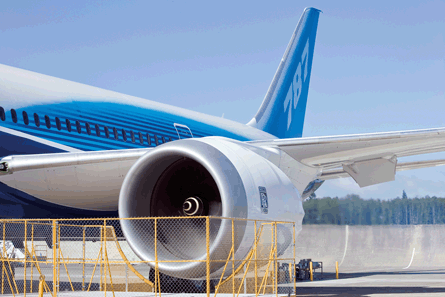As Boeing's lead 787 returned to flight operations on 17 September following an engine surge, uncertainty continues to surrounds the investigation into the 2 August uncontained failure in ground testing of a Package A Rolls-Royce Trent 1000 engine.
Boeing says the ongoing investigation by itself, Rolls-Royce and regulators into the incident that destroyed a production engine and damaged the engine maker's Bed 58 test facility in Derby, UK "includes a review of safety and continued airworthiness as prescribed by EASA and Federal Aviation Administration requirements".
"When the investigation is complete," says Boeing, "and we have more information about causes and solutions, we will work with the regulatory agencies to comply with the applicable processes."
 |
|---|
© Boeing |
The cause of the failure remains unclear, although the failure was preliminarily traced to the intermediate pressure turbine due to an oil fire following excessive build up of oil that weakened the shaft.
Industry sources say R-R has suggested an improper test procedure may have been involved in the incident, however the engine maker's original statement of 16 August says a "modification is already in place for later engines", suggesting a design change to the Trent 1000.
R-R has since resumed production of Trent 1000 engines and delivered a pair of Package A powerplants for Airplane Nine during the week of 7 September for ETOPS testing.
ZA001, the lead 787 test aircraft, suffered an unrelated engine surge of one of its Trent 1000 engines while taxiing in Roswell, New Mexico on 10 September, prompting a changeout of the powerplant.
First 787 delivery is slated for February 2011 to Japan's All Nippon Airways.
Source: Flight International























